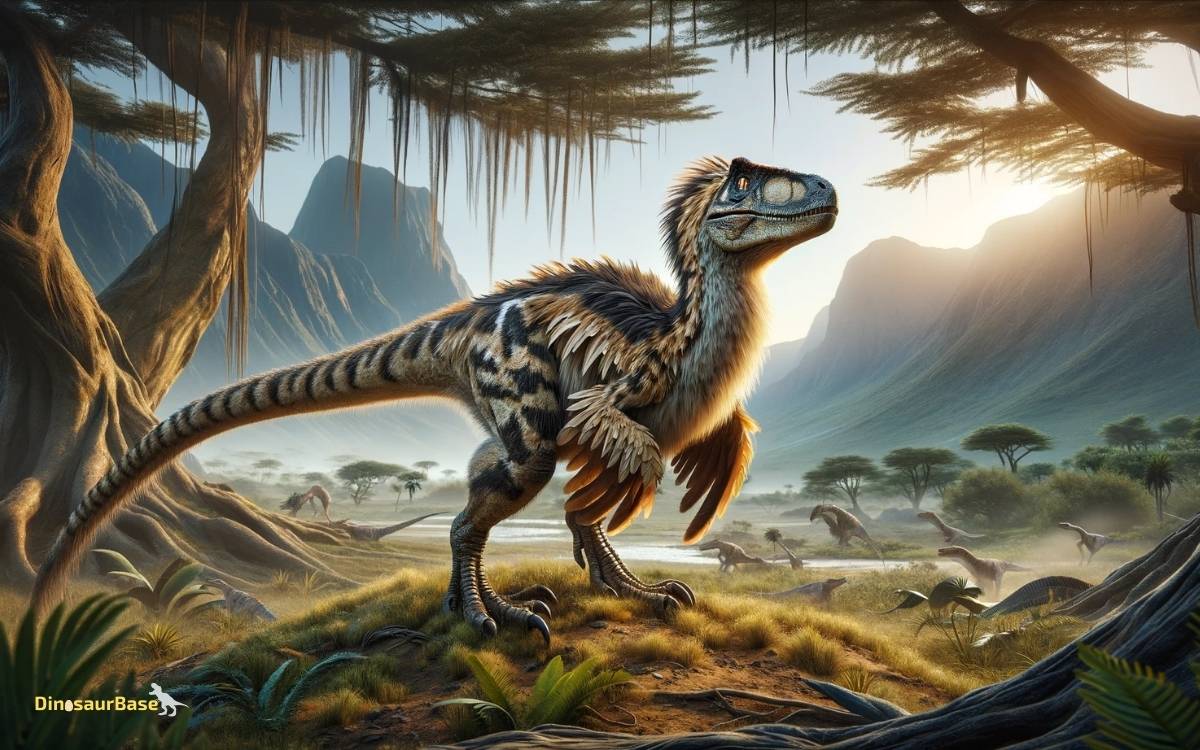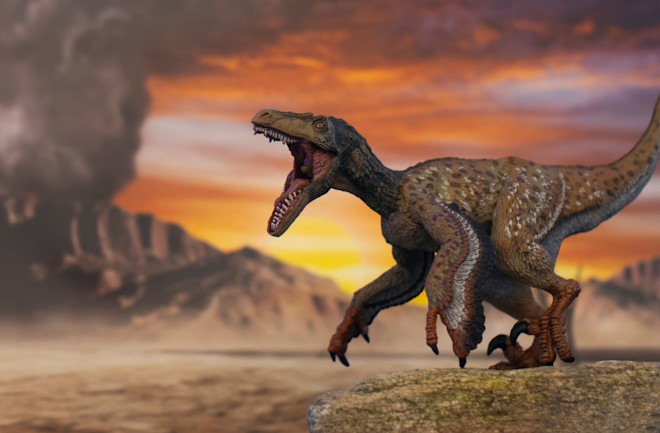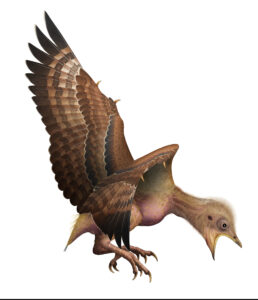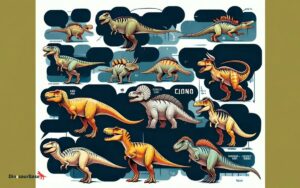How to Identify If a Velociraptor is Truly a Dinosaur
A Velociraptor is classified as a dinosaur because of its anatomical features and evolutionary history. To confirm this classification, paleontologists compare its skeleton to established dinosaur characteristics.
Understanding the prehistoric world requires discerning the true nature of its inhabitants. Velociraptors, capturing the public’s imagination especially after movies like Jurassic Park, are often the subject of such curiosity.
Identified as dinosaurs due to their distinct skeletal structure, these fascinating creatures roamed the Earth during the Late Cretaceous period.
They share critical traits with other dinosaurs, like hind limbs longer than their forelimbs, an upright stance, and unique hip bones.
Distinguishing a Velociraptor from other prehistoric animals involves a close look at its anatomy. Scientists scrutinize these features and compare them with dinosaur clades to confirm their classification.
This rigorous scientific process ensures that Velociraptors are rightfully recognized as members of the diverse dinosaur family.

Origin Of The Velociraptor
The Velociraptor is not just a Hollywood star; it’s a real dinosaur. Researchers date this creature back to the Cretaceous period. It roamed Earth around 71 to 75 million years ago. Its name means “swift seizer”, hinting at its hunting skills.
Fossil Discovery
The first Velociraptor fossil was found in 1923. Scientists uncovered it in the Gobi Desert, Mongolia.
This discovery included a well-preserved skull and some claws. Claws were vital in showing how fierce it was. The findings helped experts piece together its appearance and behavior.
Classification Tree
- Kingdom: Animalia
- Phylum: Chordata
- Class: Reptilia
- Order: Saurischia
- Family: Dromaeosauridae
- Genus: Velociraptor
The Velociraptor falls under the Dromaeosauridae family. This group is known for their bird-like features and curved claws. The classification proves Velociraptor is, without doubt, a dinosaur.

Credit: www.discovermagazine.com
Traits Of True Dinosaurs
Exploring the Traits of True Dinosaurs can lead to some amazing discoveries. Have you ever wondered what makes a dinosaur, like the Velociraptor, a true dinosaur? To satisfy that curiosity, let’s delve into their characteristics.
True dinosaurs share certain traits that are crucial for their classification within the dinosaur family tree.
Anatomical Features
Dinosaurs flaunt unique anatomical features that set them apart. Here’s what to look out for:
- Hip Structure: Dinosaurs have a distinctive pelvis shape. Their hip bones fan outwards.
- Upright Posture: Unlike other reptiles, dinosaurs hold their legs straight under their bodies.
- Three Main Limb Bones: A true dinosaur has a humerus, femur, and tibia as part of its limbs.
- Hollow Vertebrae: Their backbones have spaces for a lighter, sturdy structure.
- Hands and Feet: Dinosaurs consist of three major fingers on each hand and a similar arrangement on the feet.
Era Of Existence
The timeline of dinosaurs is a giveaway. True dinosaurs roamed during a specific period:
| Period | Starting Era | Ending Era |
|---|---|---|
| Mesozoic Era | 252 million years ago | 66 million years ago |
| Triassic Period | 252 million years ago | 201 million years ago |
| Jurassic Period | 201 million years ago | 145 million years ago |
| Cretaceous Period | 145 million years ago | 66 million years ago |
Dinosaurs thrived mainly in the Mesozoic Era. This includes the Triassic, Jurassic, and Cretaceous periods. Each period brought forth different dinosaur species.
Hallmarks Of The Velociraptor
The Velociraptor sparks curiosity among dino enthusiasts worldwide. To unravel its past, consider certain hallmarks that certify its dinosaur status. These features help us understand these ancient creatures better.
Physical Characteristics
Velociraptor, known as the ‘swift seizer,’ proudly bears dinosaur distinction.
- Size: Roughly the size of a turkey; about 2 meters long.
- Skull: A long, flat head with sharp teeth.
- Limbs: Hind legs designed for sprinting; sharp, retractable claws.
- Tail: Stiffened by bony rods; aids in balance and agility.
- Feathers: Evidence suggests a coat of feathers, akin to modern birds.
Behavioral Evidence
Behavioral traits offer clues about its dinosaur lineage.
- Hunting: Likely hunted in packs, as seen in other predators of its time.
- Nest Building: Similar nesting behaviors to birds; parental care suspected.
- Communication: Sophisticated calls and body language likely used for interaction.
Misconceptions From Pop Culture
Misconceptions from Pop Culture often skew our understanding of history and science. The Velociraptor, a creature popularized by movies, is a prime example.
Many believe what they see on screen is accurate. Yet, science tells a different story. Let’s explore how films and facts differ.
Movie Portrayals
Blockbuster movies are notorious for stretching the truth. They aim for thrill over accuracy. Velociraptors on screen are oversized, smarty, and more menacing than their real-life counterparts.
In truth, these dinosaurs are much smaller and feathered. Movies omit these facts to heighten drama.
Public Perception Vs. Scientific Fact
The line between what’s seen and what’s proven can blur. Many assume Velociraptors were giant lizards.
Dinosaurs, in reality, had diverse forms and sizes. Science shows Velociraptors were about the size of a turkey. They also sported feathers, unlike their movie doppelgangers. Compare the following facts:
| Aspect | Movie Image | Scientific Reality |
|---|---|---|
| Size | Large, towering | Small, lightweight |
| Intelligence | Exceptionally high | Comparable to modern birds |
| Appearance | Scaled, lizard-like | Feathered, bird-like |
Understanding these contrasts helps in identifying a Velociraptor’s true dinosaur heritage. It’s easier to spot misconceptions and appreciate the creature’s genuine allure.
Analyzing Skeletal Structures
Unearthing a Velociraptor’s past begins with its bones. These ancient structures are clues to its dinosaur lineage. To discern if Velociraptor is a true dinosaur, scientists examine its skeletal remains.
This process involves comparing bones and understanding their functions. Bones tell stories of the creature’s life, how it hunted, and its relationship with other species.
Paleontological Techniques
Paleontologists rely on cutting-edge methods to study fossils. They use tools and technology to unlock secrets held within bones. The process includes:
- CT scanning: Produces 3D images of fossils.
- Microscopy: Reveals bone texture and growth.
- Comparative anatomy: Studies differences and similarities.
Each technique provides insights into the Velociraptor’s place on the dinosaur family tree.
Comparisons With Modern Birds
Today’s birds are living dinosaurs. They share many features with their ancestors. Scientists compare Velociraptor bones with bird skeletons. This comparison reveals similarities in:
| Feature | Velociraptor | Birds |
|---|---|---|
| Hollow bones | Yes | Yes |
| Wishbone | Yes | Yes |
| Three-toed feet | Yes | Yes |
These and other comparisons help confirm the dinosaur status of the Velociraptor.
Concluding The Dinosaur Debate
Welcome to the fascinating world of prehistoric creatures, where the identification of a species can unlock mysteries of ancient Earth.
The question of whether Velociraptors are genuine dinosaurs sparks curiosity and debates alike. Let’s conclude this compelling discussion with insights supported by science and facts.
Consensus In The Scientific Community
The scientific community largely agrees on several points regarding Velociraptors:
- They lived during the Late Cretaceous period, millions of years ago.
- Their physical characteristics align with those of theropod dinosaurs.
- Skeletal analysis confirms their classification as dinosaurs.
Fossil records and modern technology allow scientists to study Velociraptors in detail. Genetic and morphological studies present compelling evidence. These creatures share unmistakable traits with the dinosaur family tree.
The Importance Of Accurate Identification
Accurately identifying prehistoric creatures like Velociraptors is crucial:
| Reason | Explanation |
|---|---|
| Helps understand evolution | Tracks changes in species over time. |
| Guides scientific conversation | Promotes clear and informed dialogue among experts. |
| Enriches education | Provides accurate knowledge to learners of all ages. |
Categorizing Velociraptors correctly not only enhances our scientific archives but also deepens public understanding of prehistoric life.
Frequently Asked Questions For How To Identify If A Velociraptor Is Truly A Dinosaur
How Do You Identify A Velociraptor?
To identify a Velociraptor, look for a small, feathered dinosaur with a sickle-shaped claw on each hindfoot and an elongated skull with sharp, serrated teeth. They typically measure around 2 meters in length and exhibit bird-like features.
What Are The Distinguishing Features Of The Velociraptor?
Velociraptors had a sleek, lightweight body, sharp, curved claws, and a large, hooked snout. They sported a coat of feathers and were agile predators. Their tail helped with balance during quick movements.
What Velociraptors Actually Looked Like?
Velociraptors had feathers and were smaller than often depicted, roughly the size of a turkey. They sported a long, stiff tail and an enlarged, sickle-shaped claw on each hind foot.
Were Velociraptors Real Dinosaurs?
Yes, velociraptors were real dinosaurs that lived approximately 75 to 71 million years ago during the late Cretaceous period.
Conclusion
Understanding the origins of the Velociraptor goes beyond mere fascination—it roots us deeper in prehistoric truths.
Clear evidence defines it as a bona fide dinosaur, from skeletal structures to nesting behaviors. Enthusiasts and experts alike can rely on these scientific findings to confirm their dinosaur status.
So, embrace the journey back in time, where the Velociraptor’s legacy as a true dinosaur stands uncontested.




